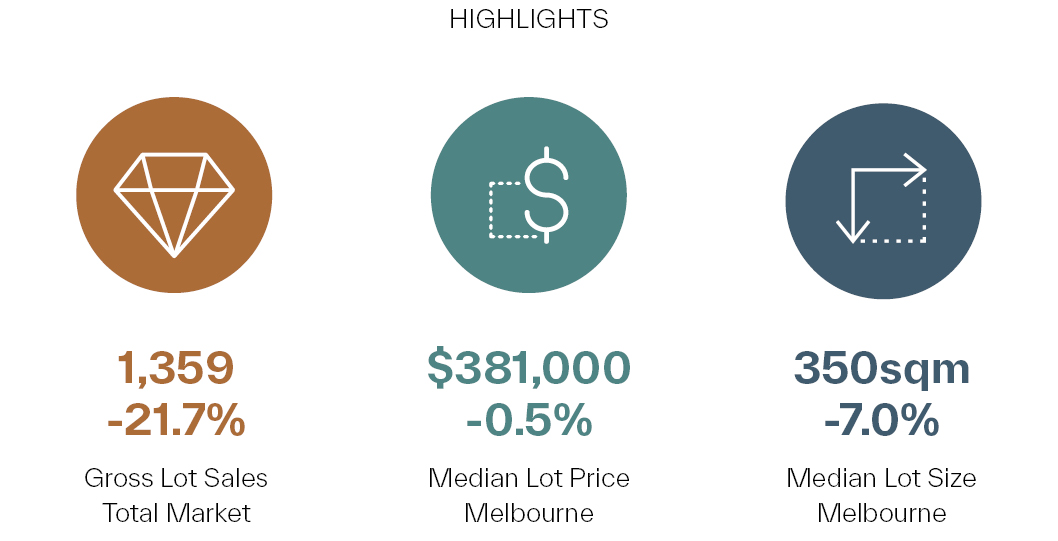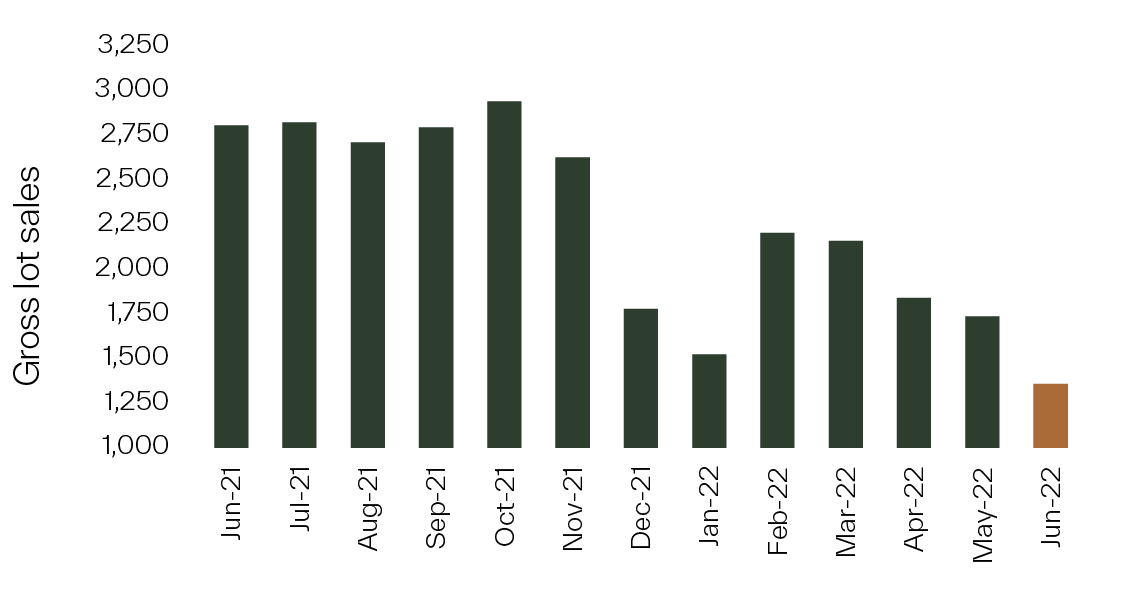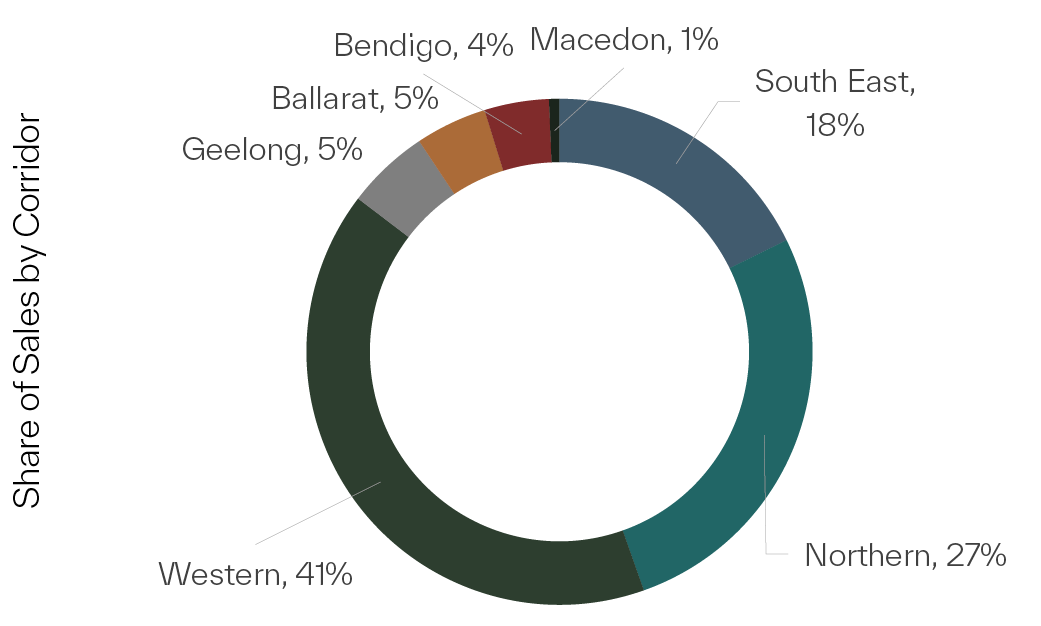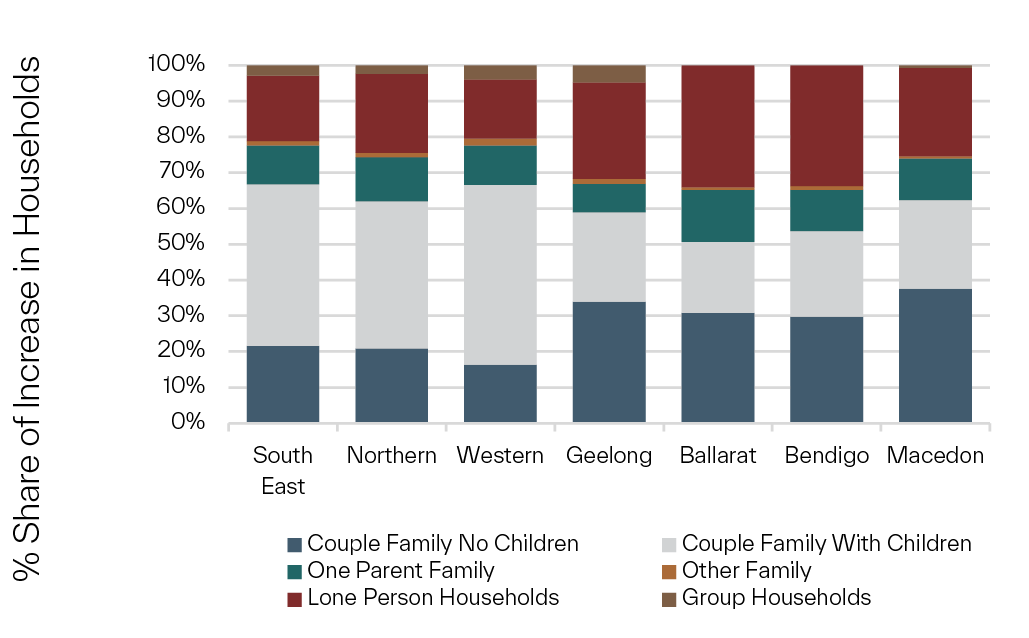Median lot size shrinks
Melbourne's median lot size diminished by 7% over June to a record low of 350sqm. This size is consistent across all three growth corridors of the Southeast, North, and West. New home demand is increasingly shifting to smaller conventional lots as purchasers seek to limit their expenditure on vacant land to compensate for higher build costs and increased borrowing repayments. This is applying upward pressure to price points for this product. Subsequently, while the overall median lot price for Melbourne in June edged lower by 0.5% to $381,000, the resultant median per sqm price escalated by a solid 7%. Median lot sizes over June in Geelong and Ballarat also remain near record lows of 400sqm and 448sqm, respectively. Price movements differed though, with the median lot price in Geelong rising by 3.6% to $385,000 while reducing by 0.5% in Ballarat to $315,000.

Monthly lot sales fall to a two-year low
The growth areas of Melbourne, Geelong, Ballarat, Bendigo, and Macedon recorded 1,359 gross lot sales in June - marking a sizeable 22% decline in activity from the previous month. This was also the lowest monthly volume of gross lot sales since May 2020. In both these periods, cautious purchaser sentiment became increasingly prevalent as buyers adjusted to rapidly evolving circumstances. Currently, successive interest rate rises, strong growth in inflation, and an increase in residential construction costs (for both labour and materials) are resulting in cautionary buyer behaviours. Many are now re-evaluating their buying decision, comparing what they desire in a new home to what is affordable given the rising cost of living.

Sales activity picks up in Ballarat and Bendigo
Ballarat and Bendigo were the only growth areas to experience an increase in gross lot sales over June, albeit from a low base with activity escalating by 24% and 65% respectively. This led to each growth area's proportion of gross lot sales doubling over the month to between 4% and 5%. The share of sale activity in Geelong was only marginally higher at just above 5%. This long-term low proportion has occurred in response to gross sales in Geelong reducing to below 100 lots. Melbourne's growth areas' proportion of gross lot sales remained relatively steady, with the Western growth corridor maintaining its dominant 41% share.

Change in households - 2016-2021 Census
Between the 2016 and 2021 Census, the proportion of the total increase in households attributed to couple families with children ranged from 40% to 50% in Metropolitan Melbourne growth areas. This was significantly lower in regional growth areas where the figures ranged from 20% to 25%. Conversely, couple families with no children and lone-person households accounted for around one-third of household growth in regional areas - compared to around 20% in Metropolitan Melbourne.


